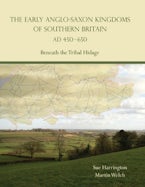Anglo-Saxon Studies in Archaeology and History is an annual series concerned with the archaeology and history of England and its neighbours during the Anglo-Saxon period. Volume 13 can be said to be truly interdisciplinary, carrying papers from diverse areas such as place-name studies, art history, historiography and archaeology. A strong theme in this issue is the early Anglo-Saxon period, with a range of papers touching on aspects of migration. Another shared theme is the complexity and multiplicity of meaning in iconography and art, whilst military strategy and military kit take this volume into the Late Saxon period.
Heathen graves and Victorian Anglo-Saxonism: Assessing the archaeology of John Mitchell Kemble (Howard Williams)
Continental connections: Angles, Saxons and others in Bede and Procopius (Philip Bartholomew)
The Undley Bracteate reconsidered: Archaeological, linguistic and runological perspectives (Seiichi Suzuki)
Topographical place-names and the distribution of Tun and Ham in the Chilterns and Essex region (John Baker)
Bloodmoor Hill, Carlton Colville, Suffolk: A preliminary report (Alison Dickens, Jess Tipper and Richard Mortimer)
Some Anglo-Saxon artefacts from Nottinghamshire (Lloyd Laing)
The five senses and Anglo-Saxon coinage (Anna Gannon)
The Lindisfarne Gospels and the aesthetics of Anglo-Saxon art (Alison Rosenblitt)
What language is this? Language mixing in Anglo-Saxon inscriptions (Elizabeth Okasha)
King Alfred and the Vikings – strategies and tactics (Jeremy Haslam)
Anglo-Saxon chain mail (Carla Morini); An Anglo-Saxon settlement at Gamlingay, Cambridgeshire (John Murray with Tom McDonald)











